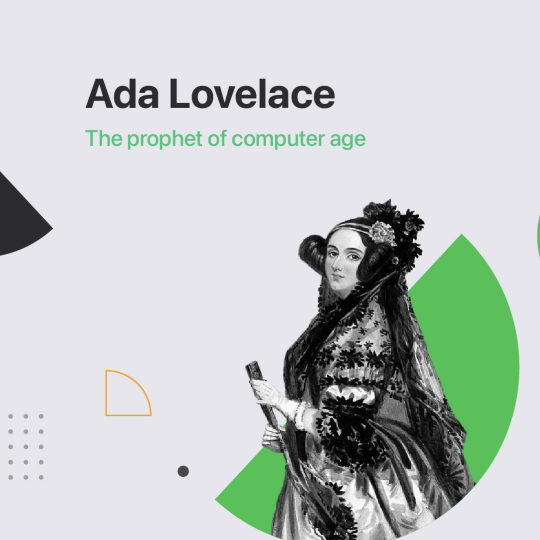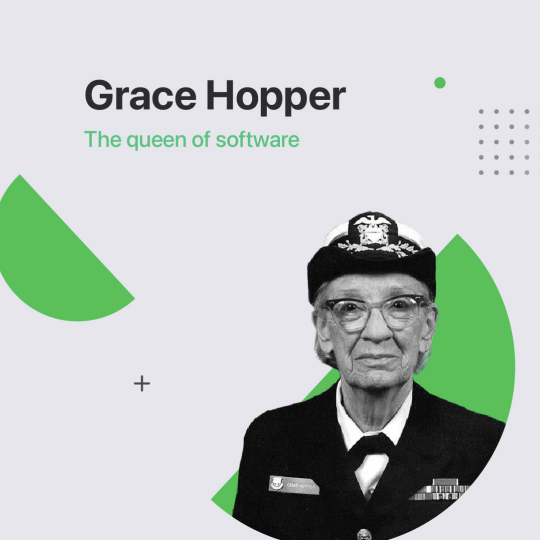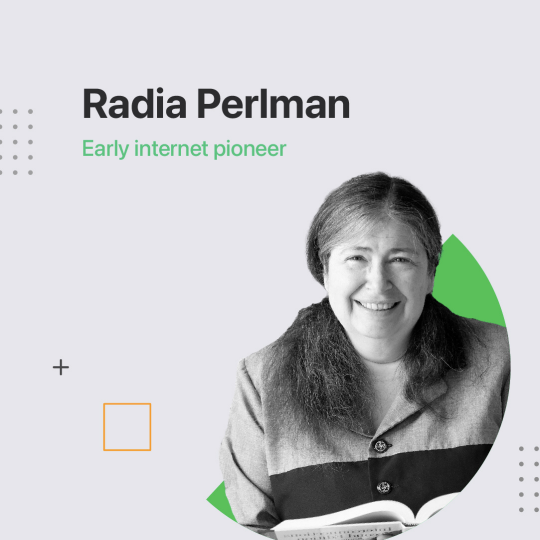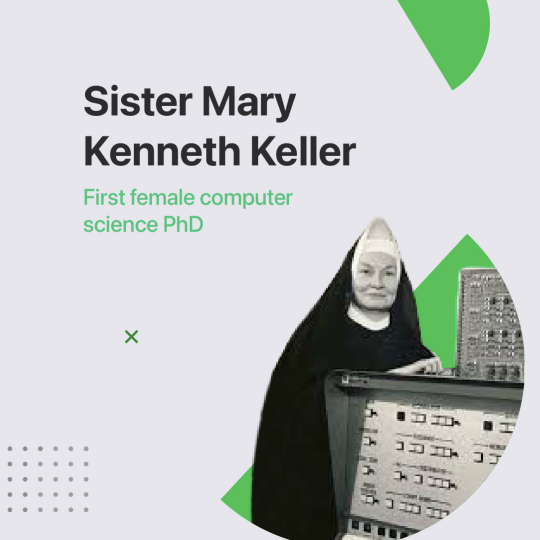Woman's History Month: Celebrating woman in tech through history
The celebration of Women’s History Month continues. Today we take a look back, recognizing five fearless women who earned their keep as changemakers with historic technology contributions.
These women navigated the road less traveled, breaking barriers in education, race, computing, government, military, and corporate America — paving the way for those who followed. To honor these five individuals and their remarkable lives, check out their stories.

Ada Lovelace, first computer programmer.
While you may not know Ada Lovelace’s name (yet), you’ve probably heard of her father, the famous poet, Lord Byron. More than 200 years ago in the United Kingdom, Ada was introduced to math and science by tutors at the ripe old age of four — a rare opportunity for a girl in the early 1800s.
At age 17, Ada was mentored by Charles Babbage, a mathematician dubbed “father of the computer” for developing an enormous mathematical calculating machine. Ada would quickly shift from protégé to visionary. While translating an article about Babbage’s theoretical analytic engine, Ada saw the potential for the machine to do much more than compute mathematical tables. Adding her own notes to the paper — three times as long as the original document — she outlined how to program the machine to do any type of computation. And the notion of universal computation was born, with Ava now recognized as the world’s first computer programmer.
Way ahead of her time, nearly 100 years would pass until Ada’s contributions were well known, spurred by the birth of the computer science field of in 1950s. But her name lives on. In 1980, the United States (US) Department of Defense named a newly developed computer programming language "Ada," in her honor, which continues to be used today.

Grace Hopper, the queen of software.
Let’s start with the impressive degrees: a bachelor’s in math and physics from Vassar College (graduating Phi Beta Kappa), followed by master’s and PhD in math from Yale University. While big on diplomas, Grace Hopper was small in stature, resulting in a rejection from the US Navy for being too short, too old (age 34), and under the weight requirement. But where there’s a will, there’s a way, and Grace persevered.
After the US entered into World War II, Grace received an exemption to enlist in the US Naval Reserve (Women’s Reserve) at the age of 36. She was assigned to the Bureau of Ships Computation Project at Harvard University where she worked for Howard Aiken, who had developed the IBM Automatic Sequence Controlled Calculator, better known as the Mark I, one of the earliest electromechanical computers. At Harvard, she made her own mark, programming the Mark I and going on to write a 561-page user manual for the machine — the world’s first computer programming manual. After the war, Grace stayed at Harvard and helped develop the Mark II and Mark III computers. Fun fact: She was the first to refer to a computer problem as a “bug” after finding a large moth inside a malfunctioning computer. Who knew?
Grace retired as a rear admiral at the age of 79 — the oldest serving officer in the US Armed Forces. She was buried with full military honors in Arlington National Cemetery and posthumously received the Presidential Medal of Freedom for contributions to the field of computer science. In 2017, Yale University changed the name of Calhoun College to Grace Hopper College.

Radia Perlman, developer of STP.
Fabulous teachers change lives. Radia Perlman was first introduced to computer programming in high school when a teacher drove several students to a class at a local university, Stevens Institute of Technology. Then, while attending Massachusetts Institute of Technology (MIT), at a time when few women did, a physics teacher’s assistant (TA) asked Radia to be a programmer for a project, which Radia quickly responded, “I don’t know how to program.” But the TA saw the potential, telling Radia that’s exactly why she was asked. “You’re obviously bright and I have no money to pay you. If you knew how to program, I’d have to pay you,” the TA explained.
Following her years at MIT, Radia went on to become a leader in the field of computer science. While at Digital Equipment Corporation, Radia developed the algorithm for Spanning Tree Protocol (STP), a concept adopted as a technology standard that laid the groundwork for the internet as we know it today. This earned her the unofficial title of “Mother of the Internet,” but of all of her accomplishments, she’s most proud of her books.
Radia holds more than 100 patents, was inducted into the Internal Hall of Fame and the National Inventors Hall of Fame, and wrote Interconnections, a widely acclaimed textbook on computer networking. In an interview for Female Innovators at Work, she shared, “I’m quite proud of being able to make sense out of very muddy fields full of misconceptions and ill-defined buzzwords, making it understandable and thought-provoking, and entertaining as well.”

Sister Mary Kenneth Keller, first woman with a PhD in computer science.
If you have a computer science degree, raise a glass to Mary Kenneth Keller — a woman who committed her career to expanding the reach of computer science to women in the field. Mary entered the Sisters of Charity of the Blessed Virgin Mary in 1932 and then went on to earn a BS in Mathematics and MS in Mathematics and Physics from DePaul University.
In 1965, she earned a PhD in computer science from The University of Wisconsin, the nation’s first woman to do so. Fun fact: Sister Mary was nearly the first person to achieve this status, but a man earned his degree at Washington University earlier the same day.
Sister Mary followed another calling to Dartmouth College, which at the time was a male-only institution. But barriers be damned, she teamed up with computers scientists, John G. Kemeny and Thomas Kurtz to develop BASIC, a computer programming language that made custom software development accessible to those who weren’t scientists or math pros.
Sister Mary later founded the computer science department at Clarke University, where she taught and directed the department for over 20 years, growing the program to include a master’s degree in computer applications in education. Clarke University honored her legacy with The Keller Computer Center and Information Services, which currently provides computing and telecommunications service to students, as well as the Mary Kenneth Keller Computer Science Scholarship.

Katherine Johnson, stargazer.
Born in West Virginia in 1918, Katherine Johnson was mesmerized by numbers and counting, especially stars in the sky. Her smarts propelled her through school, finishing high school at age 14 and graduating summa cum laude from West Virginia State University with a double major in math and French.
In 1953, Katherine was hired by the National Advisory Committee for Aeronautics, the agency that would become NASA. Two weeks into her job, she was borrowed by the Flight Research Division to help calculate the aerodynamic forces on airplanes — the only Black member of the team. If you saw the Oscar-nominated film, Hidden Figures, you’re familiar with the following historic contributions.
In 1962, astronaut John Glenn asked Katherine to personally double-check the trajectory in calculations for Friendship 7, helping him become the first American to orbit earth. And she went on calculate trajectories to enable Apollo 11 to land on the moon in 1969, resulting in Neil Armstrong’s famous moonwalk. In 2015, President Obama awarded Katherine the Presidential Medal of Freedom and in 2017, NASA named the Computation Research Facility in her honor.
Celebrating more women in tech.
Want to learn about other successful women in tech? Check out our recent blog profiling four successful women and the role that Claris FileMaker has played in their careers. Plus, our extensive partner ecosystem is comprised of many women-led organizations and female developers who would love to help build your business a custom app. Find a partner near you.